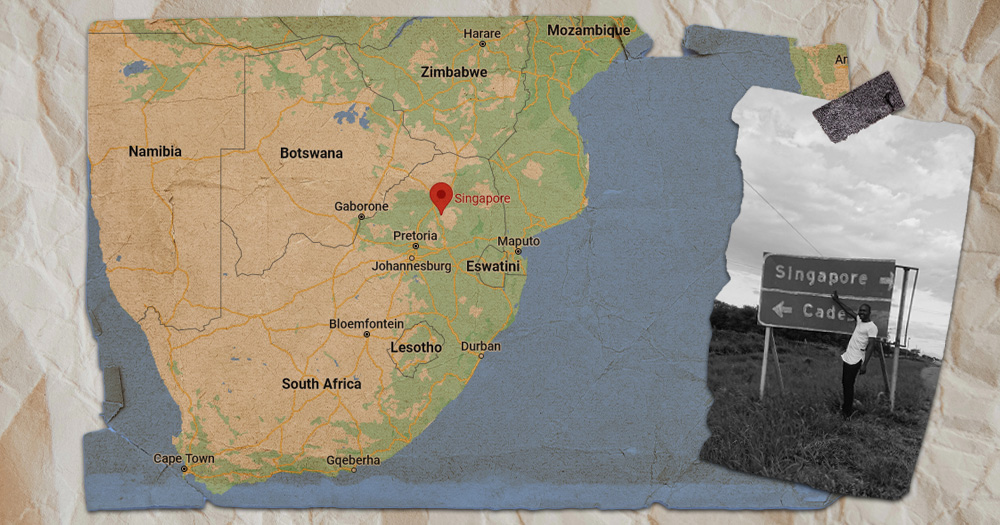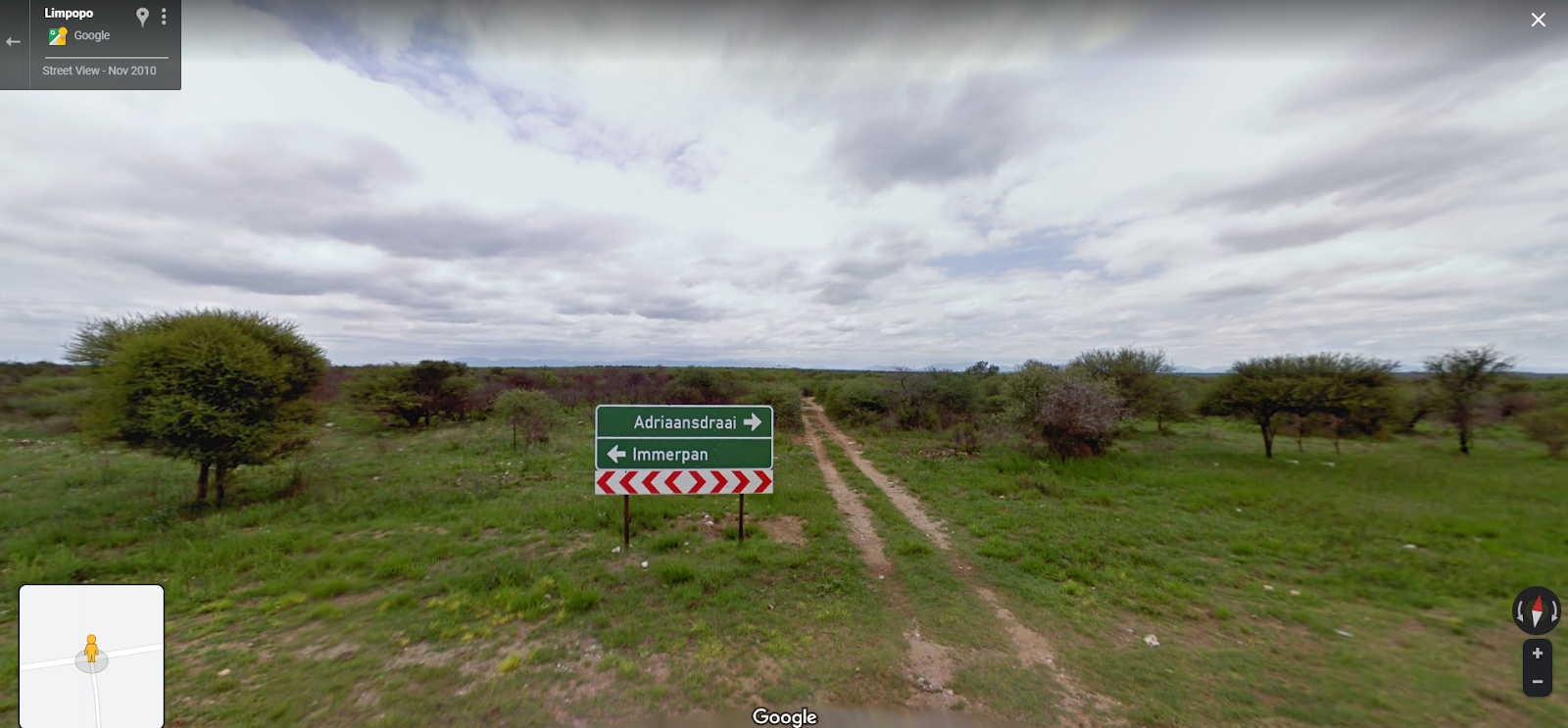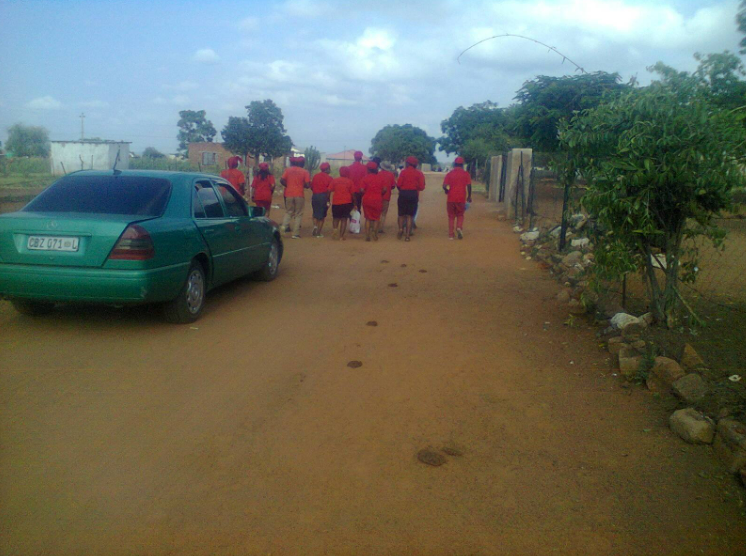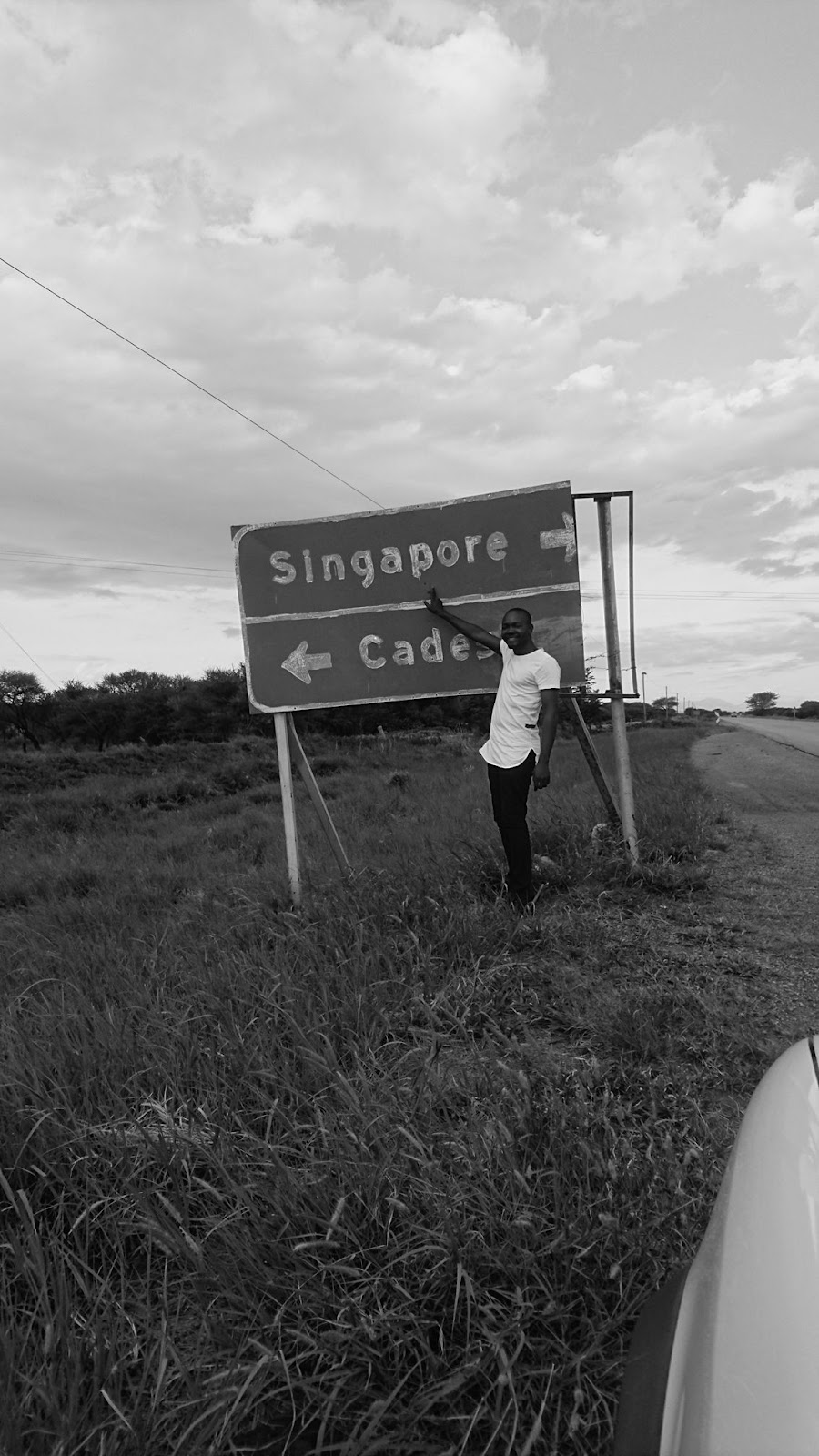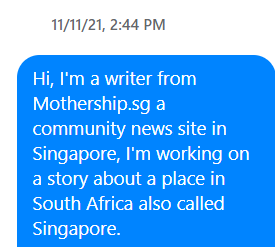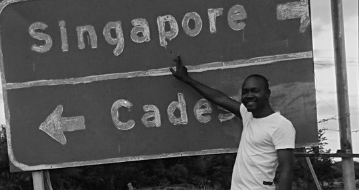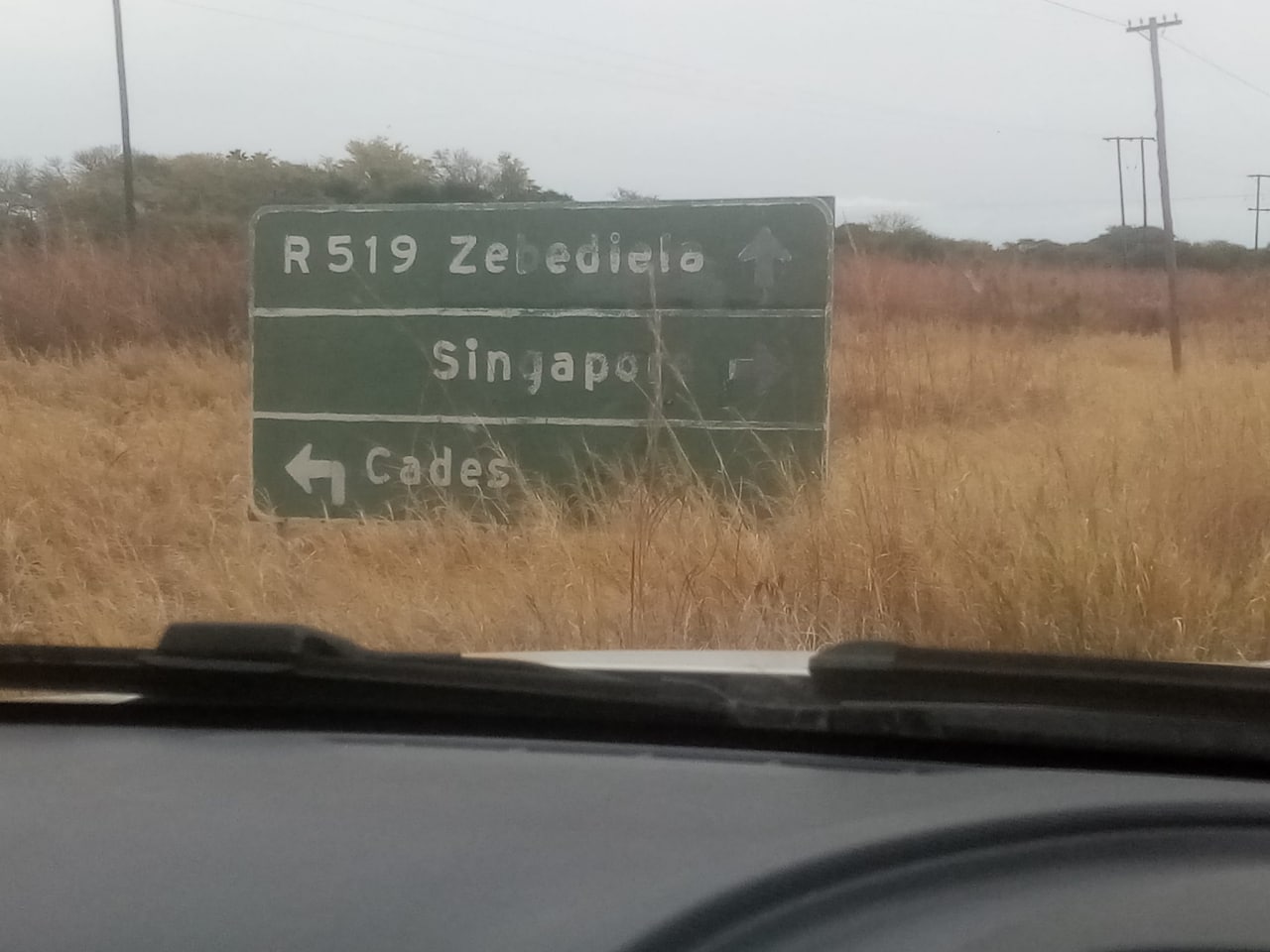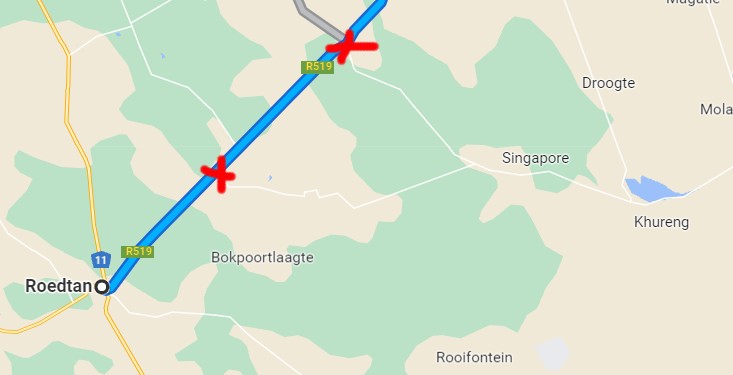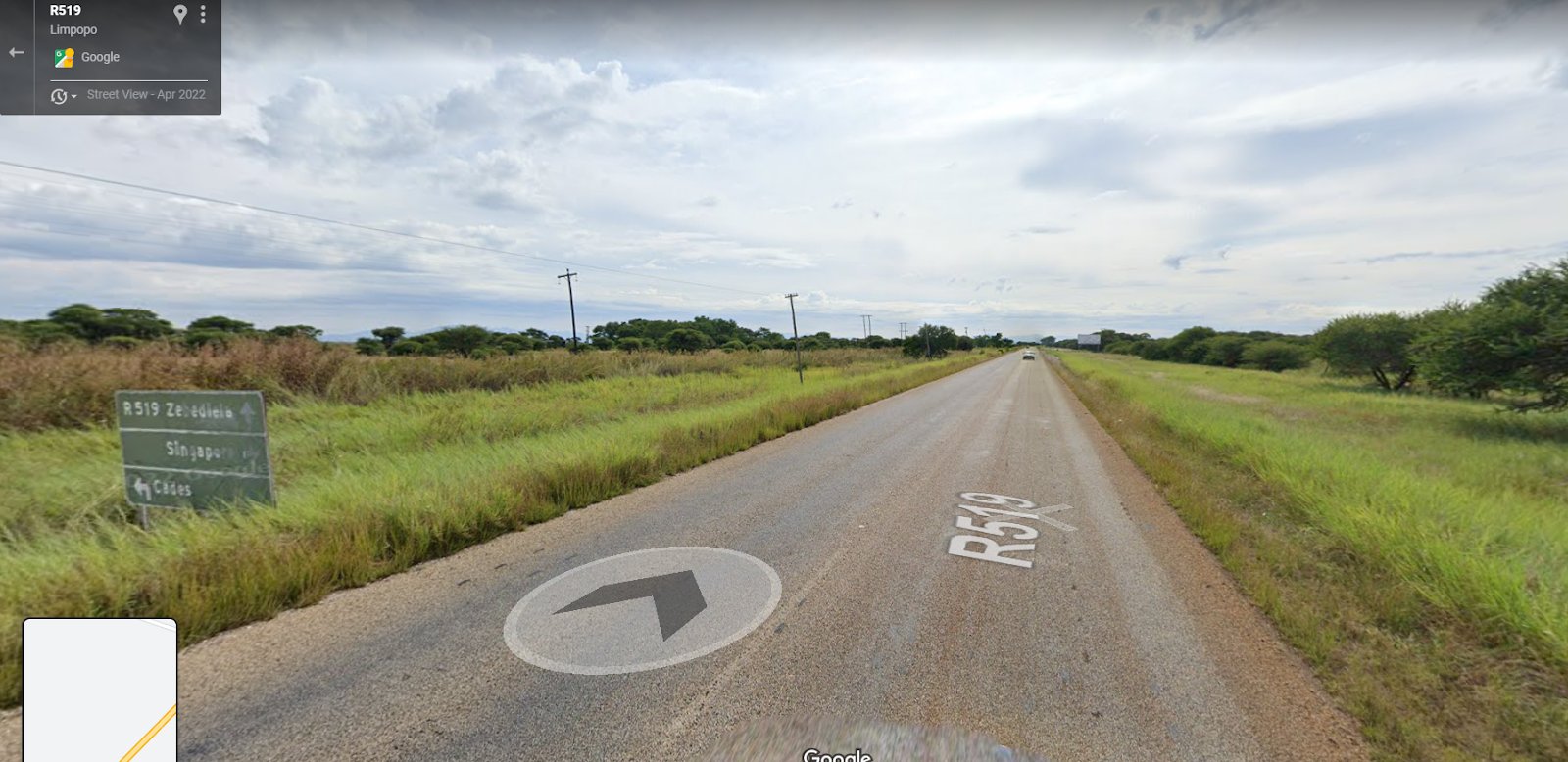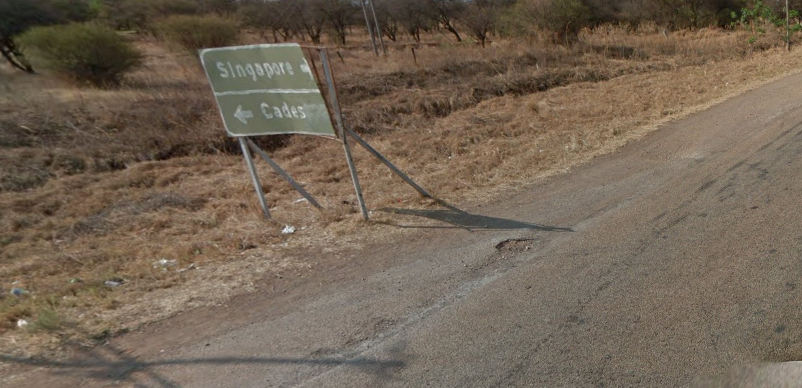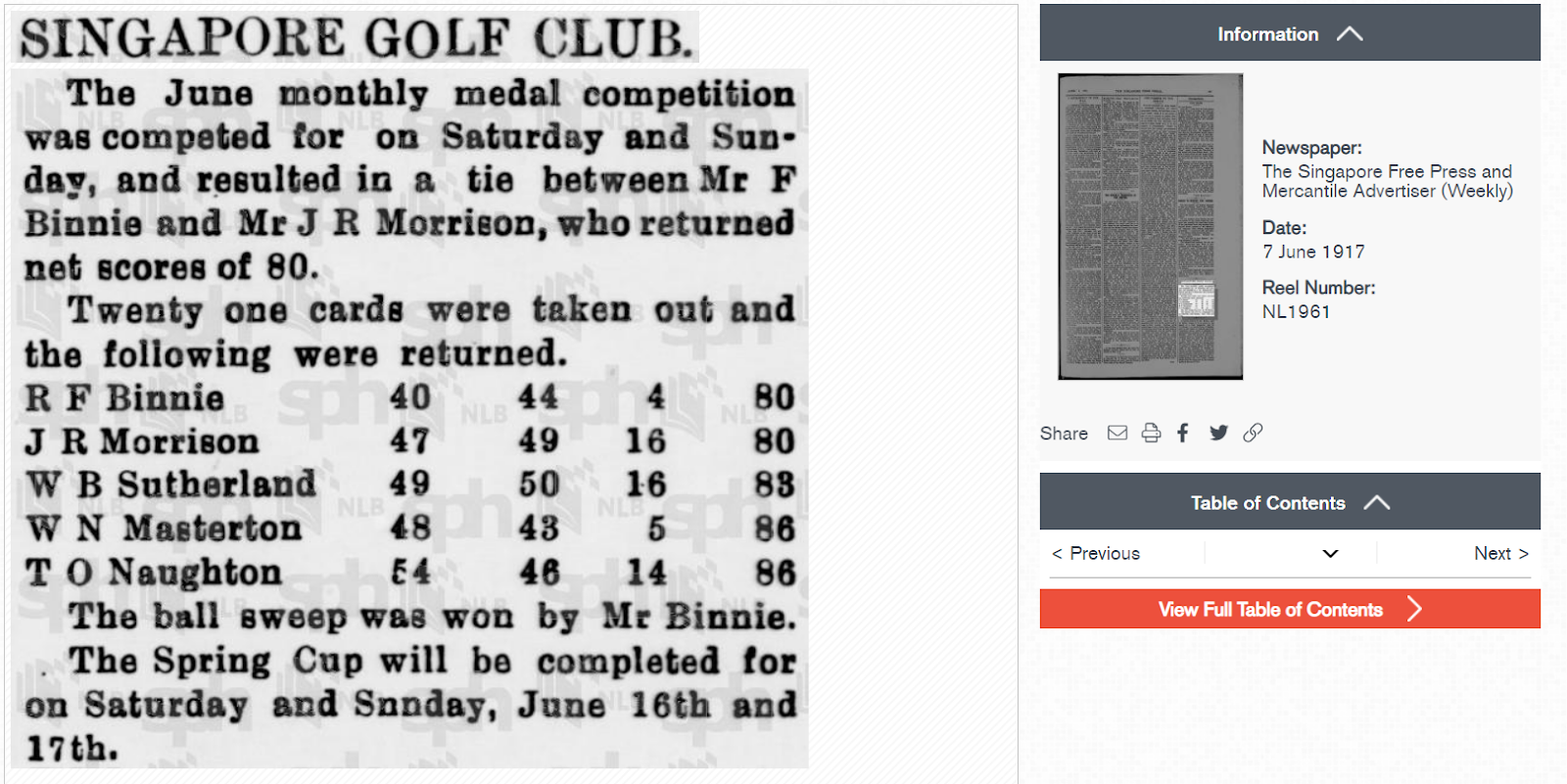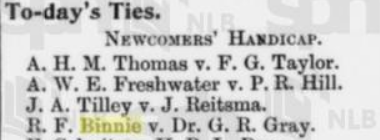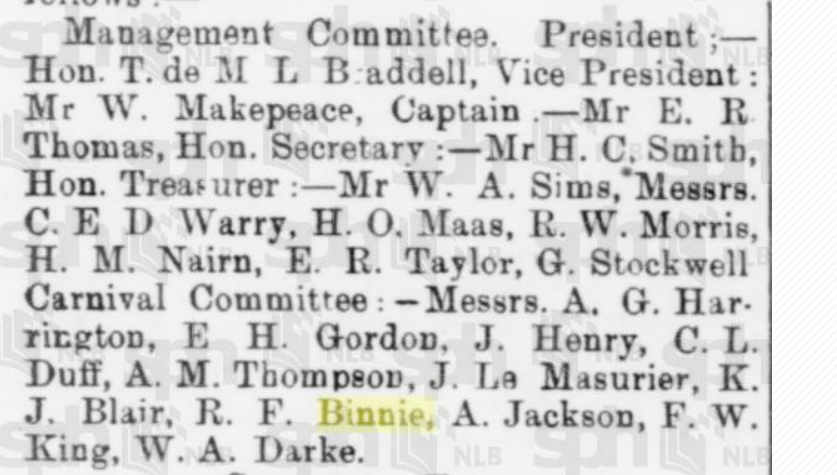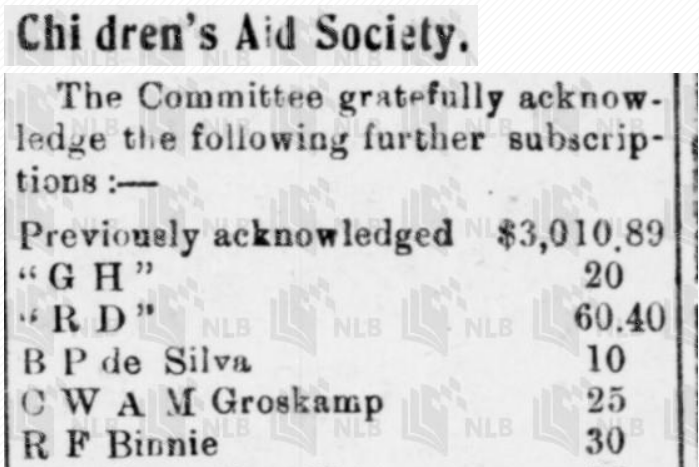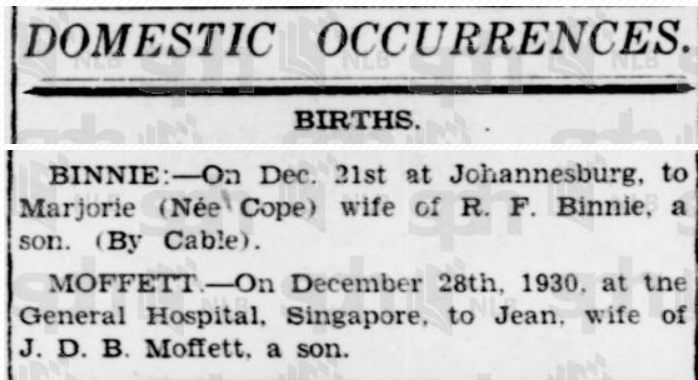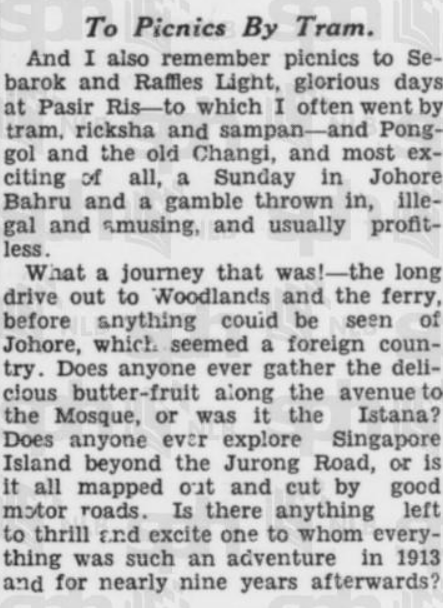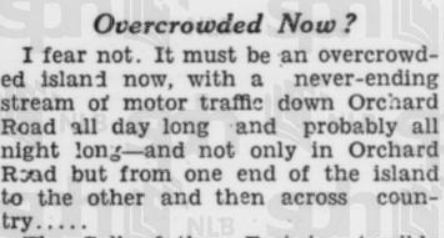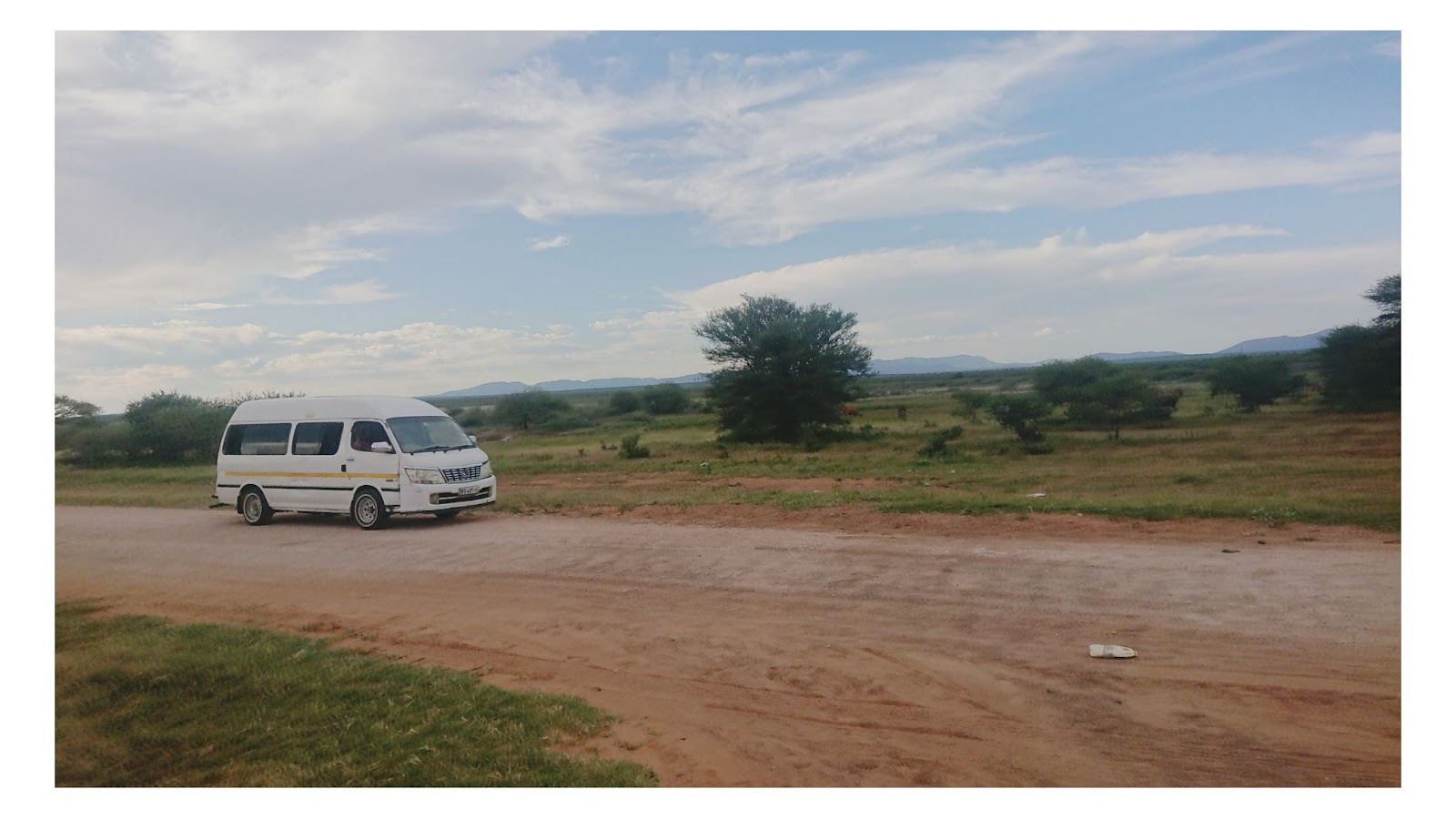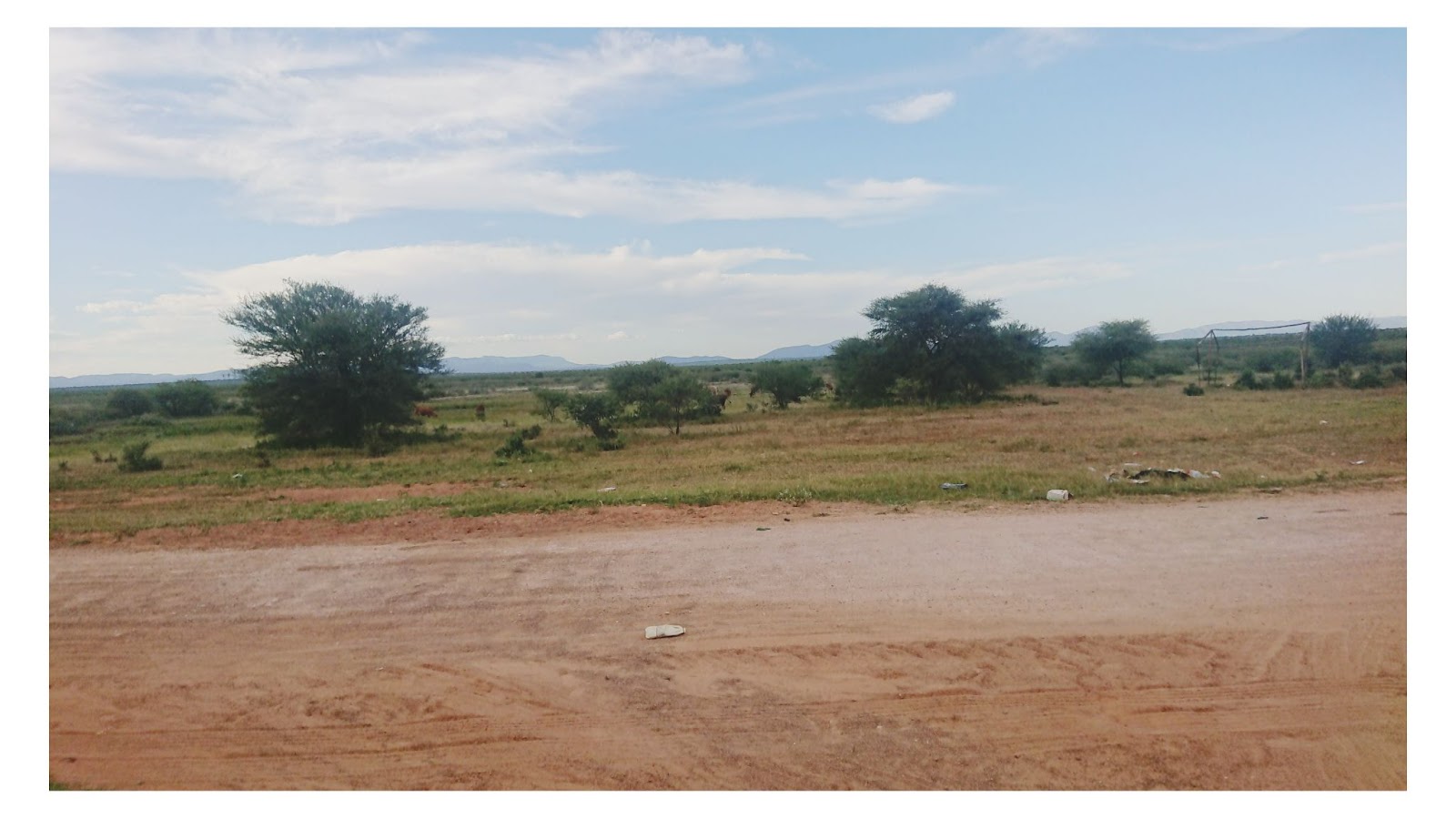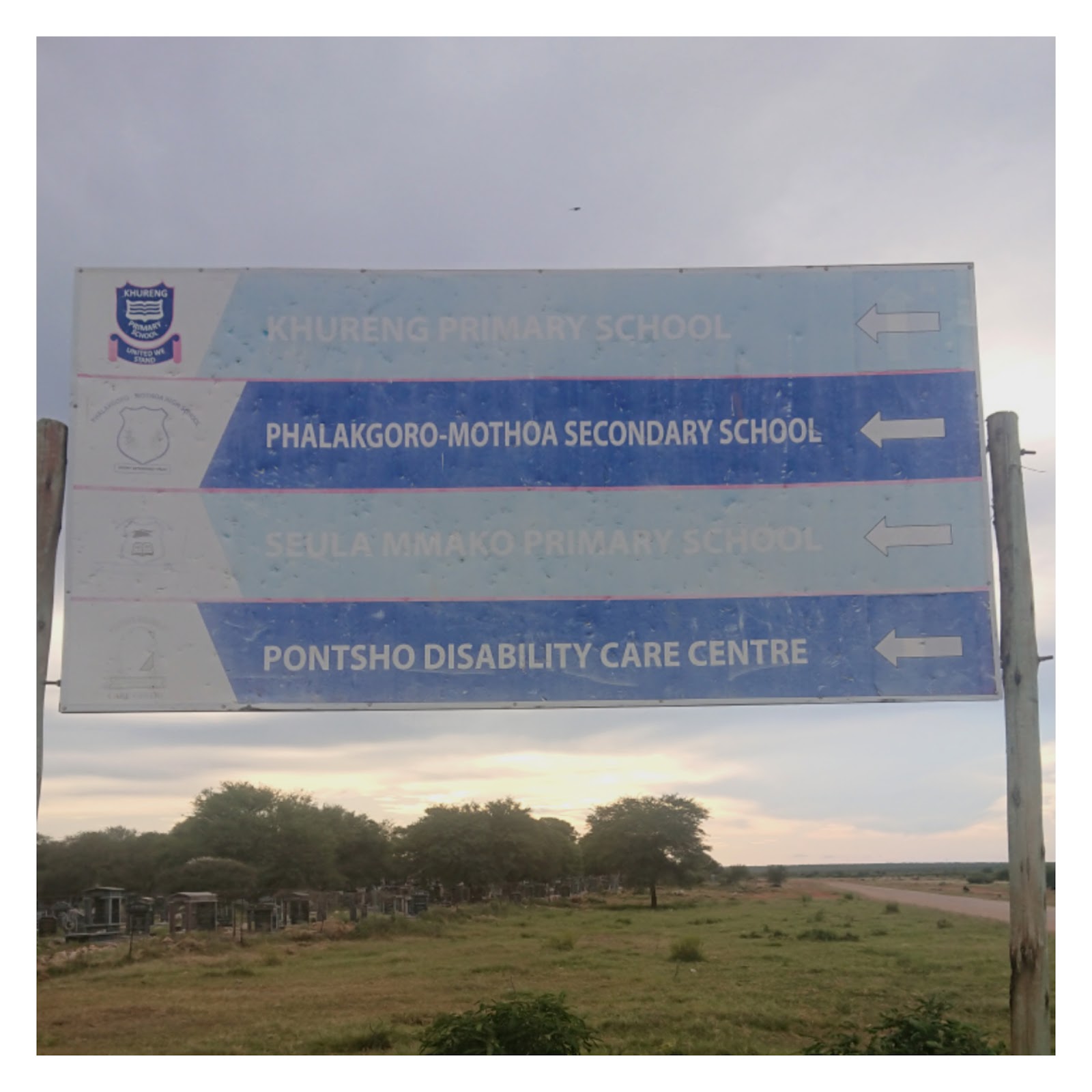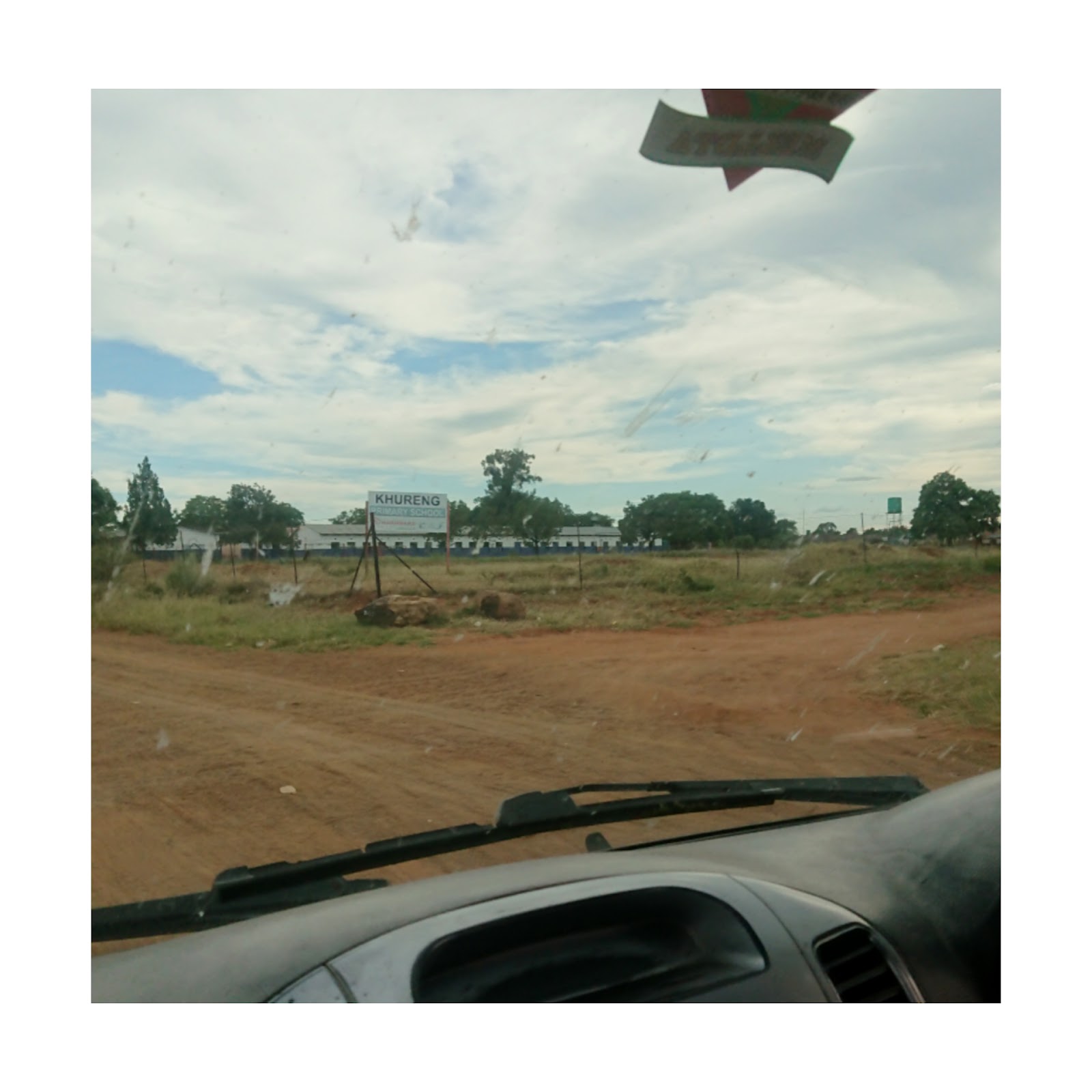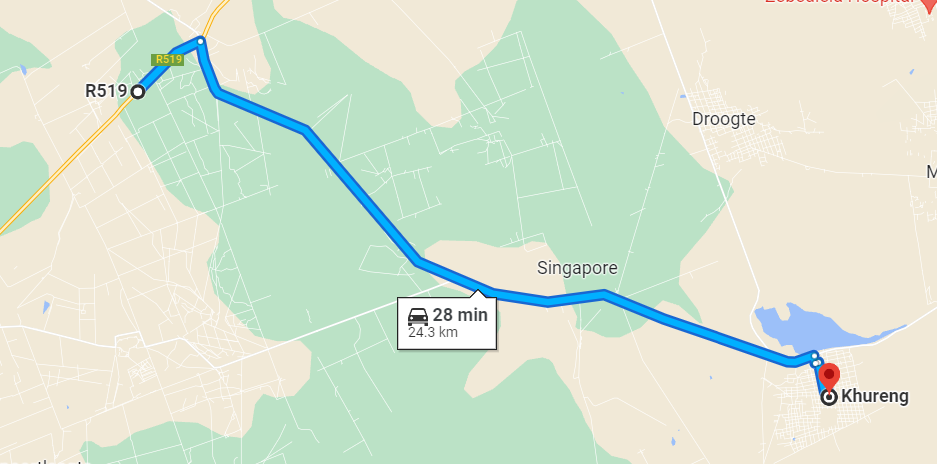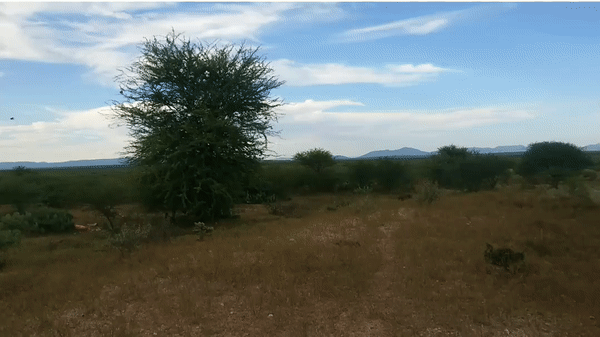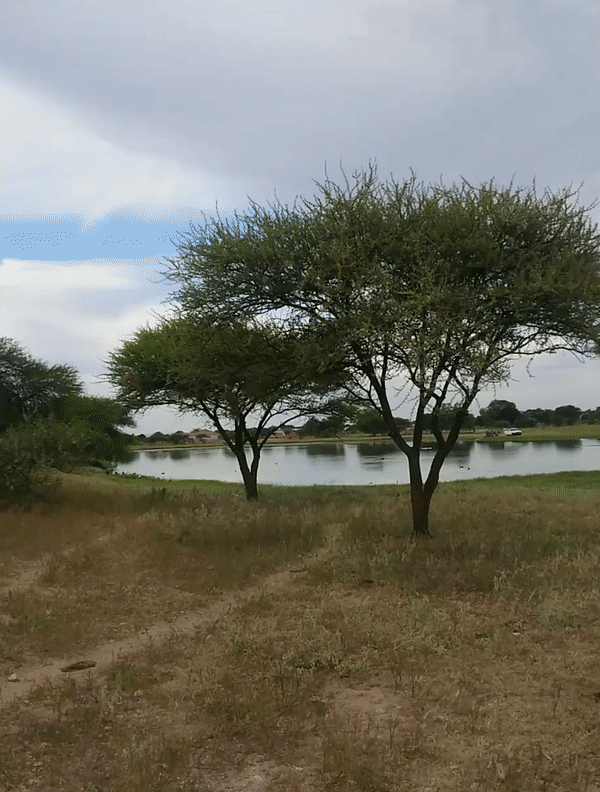Follow us on Telegram for the latest updates: https://t.me/mothershipsg
This is Singapore.
This is also technically Singapore.
Just over 9,000km away in South Africa.
Having a place in a country named after a different country is not particularly novel. It’s not even the only place outside Southeast Asia with the name Singapore.
But unlike the relatively well-documented history of the Michigan Singapore, there’s somewhat less information about the Singapore in Limpopo, South Africa.
(For the rest of the article, unless otherwise noted, Singapore will be referring to the Singapore in Limpopo)
Here’s a 2010 article from The Straits Times.
Limpopo’s Singapore is mentioned fleetingly, with the article noting that “little information is available about the place".
That was the first time that particular Singapore had come to the attention for most Singaporeans.
Over 12 years after that ST article, it seems we haven’t discovered much more about the place.
The Wikipedia entry is relatively sparse.
And Google Maps doesn't even reach the area.
Stopping quite a bit shy of the location.
Nothing much on other social media sites either, although if you search Singapore Limpopo on Facebook, you get a couple of pictures of what appears to be a South African village.
These, however, are probably not of the same settlement but rather just a village in the general vicinity.
In fact, from what I found online, there appeared to be only two photos of a signboard in Limpopo signalling the location.
Here’s one taken by Hlangi Sithole:
We’ve written a couple of articles on the subject, but I still knew next to nothing about the area itself.
There’s no readily available information about the size, location, or even photos of the place.
So I decided to find out the answer to all those questions and, more importantly, why it was called Singapore.
I figured a couple of messages to some folks from South Africa would clear this up in a few days.
That was more than a year ago.
Nobody knows Singapore
A message to a Facebook group, “South Africans in Singapore” laid the groundwork for what to expect over the coming year.
An administrator kindly informed me that while they would try to see if anyone in the group was aware of Limpopo’s Singapore, they weren’t sure if there was much in that area.
Since the area in question might not see that much human traffic, I decided to seek out experts on Limpopo.
A bunch of emails to some professors from relevant departments in universities around the area ultimately led me to nothing but more dead ends.
But then a breakthrough.
I had been reading the book “Dictionary of Southern African Place Names” by Professor Peter Raper, a great encyclopedia on the historical origins of names of places in South Africa.
While there was no mention of Singapore in any of the book’s iterations, it turns out South Africa has used other places in the world as name inspiration for its locales:
Amsterdam, Andalusia, Hottentots Holland, and Marseilles, to name a few.
In hopes that the Singapore entry might be a DLC or something, I reached out to Professor Raper, considered one of the foremost experts on place names in South Africa, to ask if he knew the etymological origins of the settlement.
Good news: The professor actually took the time to reply.
Not-so-good news: He no longer had “an extensive archive of place names” as he had left the South African Onomastic Research Centre, which focused on the history and origins of place names.
Still, he went above and beyond, giving me the name of the university that now housed these archives and another expert in the field, Professor Adrian Koopman.
Koopman was also incredibly helpful, providing more context to the archival location.
According to Koopman, the University of KwaZulu-Natal did house these archives, though they didn’t have a curator — at least when he was there about 10 years ago.
Despite being retired since 2012, Koopman said he believed the archives were still housed in the same room as when he left.
While I now knew where the archives were, I suspected there was another issue that I would have to face soon.
And true enough, after quite a few emails with no response, it was clear that with no one in charge of the archives, it was going to be hard finding someone willing to sieve through tonnes of un-catalogued documents just to answer a trivial etymological question.
Since academia was proving to be a pretty tough nut to crack, I decided to pursue a path with less bureaucracy and red tape.
I started emailing government officials.
Spoiler alert, it didn’t lead to any new information.
But once again, this was a rather niche request from a non-citizen, so completely understandable.
In fact, quite a few officials very nicely attempted to help me find an answer. But after about two rounds of delegations to what I assume were lower-ranked officials, the replies started drying up.
What did surprise me was one particular line in an email thread between these officials.
This line kind of encapsulated just how difficult it would be to find out more about South Africa’s Singapore.
It was written by a senior official before he ultimately delegated the task of finding out about Singapore to someone else.
Expressing surprise at my etymological request, he said:
“I am hearing the name in Limpopo for the first time.”
On the ground
That particular exchange was from some time in 2022. It had been months since I started on this, and while I had learnt quite a fair bit about how bureaucracy works in South Africa, progress on my original goal had been frustratingly stagnant.
I decided to change my approach to focus on individuals rather than organisations.
So remember this guy?
I messaged Hlangi about the sign to see if he had taken a detour to Singapore.
But unfortunately, while he had indeed passed by the area, he had not gone down to the place.
Other messages to residents around the area resulted in duds or non-replies. Even folks in Khureng, the nearest village based on Google Maps, apparently didn’t know about this Singapore.
It was almost like no one had ever heard of this settlement, which led me to wonder:
1. Was there anyone there?
And if there wasn’t.
2. What exactly was Singapore?
The first question would be settled by a conversation I had on freelancing site Fiverr.
While trying to get more information about the place, a Fiverr member from South Africa patiently explained why a settlement in that area was probably impossible.
He said the surface was unstable, so there was probably nothing there.
A quick check on Google Earth seemed to tally with that claim.
More on Fiverr later.
So if nothing was there, how could it be a settlement?
A sign
There was something about the signs that was bugging me.
Here’s the picture of the signage that Hlangi took.
Here’s the other sign I found on the internet.
After some guesswork and way too much time browsing maps, I landed on two possible locations where these signs might be from.
A bit of a road trip on Google Maps later, and tadahhh.
And also, tadahhh again.
But back to the important stuff.
I had been so focused on finding Singapore that I had completely overlooked the other place on the sign.
Cades.
See, Cades has significantly more details about it than Singapore.
And every Google search is pretty clear about what Cades is.
It’s a farm.
And if farms are shown on road signs, then maybe that particular sign shows two farms instead of a couple of settlements.
Singafarm
Luckily for us, South Africa keeps an incredibly detailed catalogue of land transactions and other governmental documents.
And once you ignore the framing of Singapore as a settlement, details about the place become significantly easier to find.
Here’s the very first mention of Singapore in the South African archives in 1950.
 Screenshots from Gazette Africa
Screenshots from Gazette Africa
Potgietersrust
Here’s who owned the farm according to these 1951 documents.
Kern Meule.
And here is Singapore getting approval to widen its roads around the same time Southeast Asian Singapore gained independence.
Nice.
It wasn’t much, but this at least confirmed there was a place, albeit a farm, in South Africa called Singapore.
Of course, talking about land ownership in South Africa is a complex affair.
From 1913 onwards, thousands of black families were forcibly removed from their land after the passing of the Natives Land Act.
The government also initially limited African land ownership to seven per cent.
And while Africans could still occupy land, they could be evicted at any time as they were not legally entitled to hold the deed for said land.
When apartheid ended in the 90s, land reclamation measures were soon introduced to get land reform underway.
These measures would soon turn into the 2006 Proactive Land Acquisition Strategy.
Basically, the South African government would buy farmland previously owned by white farmers and redistribute it to black farmers. You can read more about how that went/ is going here.
Singapore itself was the subject of at least two claims for restitution of land rights.
One by the Aphane community:
Here is the land involved:
Which is quite a lot of land.
But a more recent claim, this time by the Zebediela community, narrows down just how much land Singapore is on.
So about 447 hectares.
I wasn’t able to find the outcome of these claims, but as of 2021, Singapore was still being listed as a farm, according to South Africa’s gazettes.
So to recap, Singapore was, at the very least, already named as such in 1950. It spans about 447 hectares (for comparison, the Sungei Buloh Nature Park Network is 400 hectares) and is still listed as a farm, not a settlement.
It might also have been claimed by the Zebediela or Aphane community, or the government might have just bought the land.
But why Singapore?
Now for the more anti-climatic reveal of the naming origins.
Unlike settlement or town names, farm names are sometimes just given by land surveyors. A real estate agent specialising in farms told me that was exactly how several farms in and around Limpopo had received their names.
An example of this would be the town Parys about 120km away from Johannesburg.
According to the “Dictionary of Southern African Place Names”, the name was probably suggested by a German surveyor who had participated in the siege of Paris in the Franco-Prussian War.
I’ve reached out to the surveyor general of Limpopo and the chief surveyor of South Africa and will update the article if they respond.
But that’s the more boring assumption.
Here is my super duper out-of-nowhere conjecture.
Ok, so remember how Kern Meule was the person or corporation who/that owned the farm?
Well, in 1956, there was a gazette announcing retail agents for a mealie (a breakfast dish) program.
The same 959 address from earlier on, but the retail agent in charge was R.F. Binnie. There was another address listed in this document, Naboomspruit.
Keep that address in mind.
But lets first take a closer look at the retail agent.
Now when you hear the name R.F. Binnie, what do you think of?
That’s right, you think of Southeast Asia’s June 1917 Singapore Golf Club winner, R F Binnie.
Binnie appeared to take part in quite a lot of sporting events in Southeast Asia's Singapore as well, before seemingly moving to South Africa sometime in the 1920s.
Like this lawn tennis competition for example.
His involvement in sporting events wasn't limited to participatory roles as well.
Here is Binnie helping out as one of the carnival committee members for the 1911 Swimming Club Carnival held at Tanjong Katong.
And here he is contributing to the Children’s Aid Society.
All this to say that he was at least somewhat involved in the country’s activities.
And that connection to Southeast Asia’s Singapore wasn’t severed when he left the island.
Here are two birth announcements in our local papers for their (R. F. Binnie and Marjorie Binnie) children all the way from, you guessed it, Naboomspruit.
The announcements in the local newspaper, despite them having lived in South Africa for a while, might suggest relatively strong connections to Southeast Asia's Singapore.
A little bit about the place they moved to.
Naboomspruit, now known as Mookgophong, is a relatively small town with a population of around 25,000 now. Anecdotal evidence suggests population in that area was equally sparse back in the early 1900s.
Another interesting coincidence is that there was a person called Marjorie Binnie, which is also the name of R.F Binnie’s wife, who had her works published in The Singapore Free Press and Mercantile Advertiser, Southeast Asia Singapore’s second English-language newspaper.
Her articles, which were from the late 1920s to early 30s, focused on her experience setting up a farm in South Africa.
The last document I could find from her was a letter to ST back in 1936.
In it, she talked about how much she still missed Southeast Asia Singapore over a decade after leaving it:
She also shared her fear that Southeast Asia's Singapore would be overcrowded compared to when she lived there.
Signing off from this location.
Naboomspruit.
So perhaps the Binnies felt enough of a kinship with Southeast Asia’s Singapore to maybe name a farm in South Africa after it?
Granted, that’s a bit of a stretch, but 80 is apparently quite a good score to get in golf, so who knows?
Another name
There was just one more loose end to tie up.
See, I hadn’t been on Fiverr purely to ask if people had heard of the area, none of them had, but also to ask if they would do me a huge solid and go down to take some pictures of the very out-of-the-way place that was Singapore.
Most politely declined, some agreed but eventually ghosted me, and in the end, only one person agreed.
Bongani.
Bongani’s Fiverr listing had this title:
“I will assist you with anything related to south africa”
It turned out to be the least hyperbolic thing on the website.
Bongani and I agreed on a custom package (because he didn’t have “weird guy from Southeast Asia ask to take photos of basically nothing in the middle of nowhere” on his Fiverr order list), and he soon set off.
I cannot emphasise how much of an intrepid professional Bongani was, and even he admitted it was hard to get there, given how rural the area was.
Here are some photos of the route he took.
And here he is driving through Khureng, the nearest village to Singapore.
There were no signages whatsoever of Singapore erected there. Which kinda explains why the locals might not have known that the area was named that.
Here’s how far the signage of Singapore shown earlier is to Khureng.
Pretty dang far.
And finally, after over a year of unanswered emails and conversational dead ends, I finally got to see what Singapore looked like.
Here it is, Singapore:
Absolutely nothing.
But so pretty, right?
Surprisingly enough, the locals around Singapore do know about the area. They just don’t call it Singapore.
They have another name for it.
According to Bongani, they call it “Mohlareng”.
Which roughly translates to place with “lots of trees”.
Top image from Google Maps and via Hlangi's Facebook
If you like what you read, follow us on Facebook, Instagram, Twitter and Telegram to get the latest updates.
